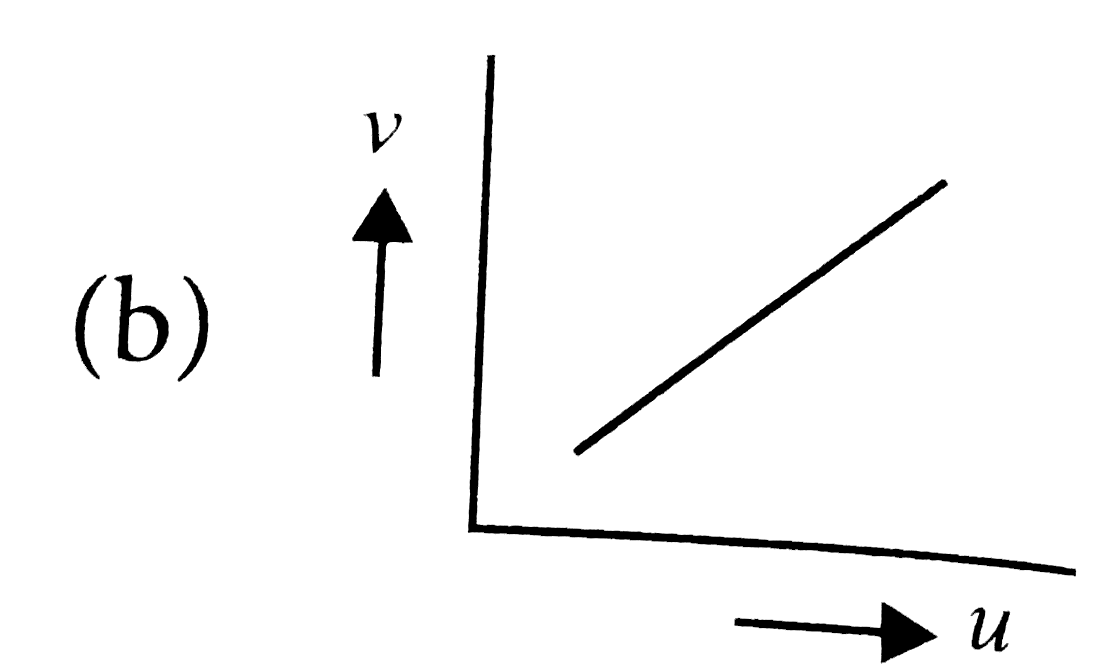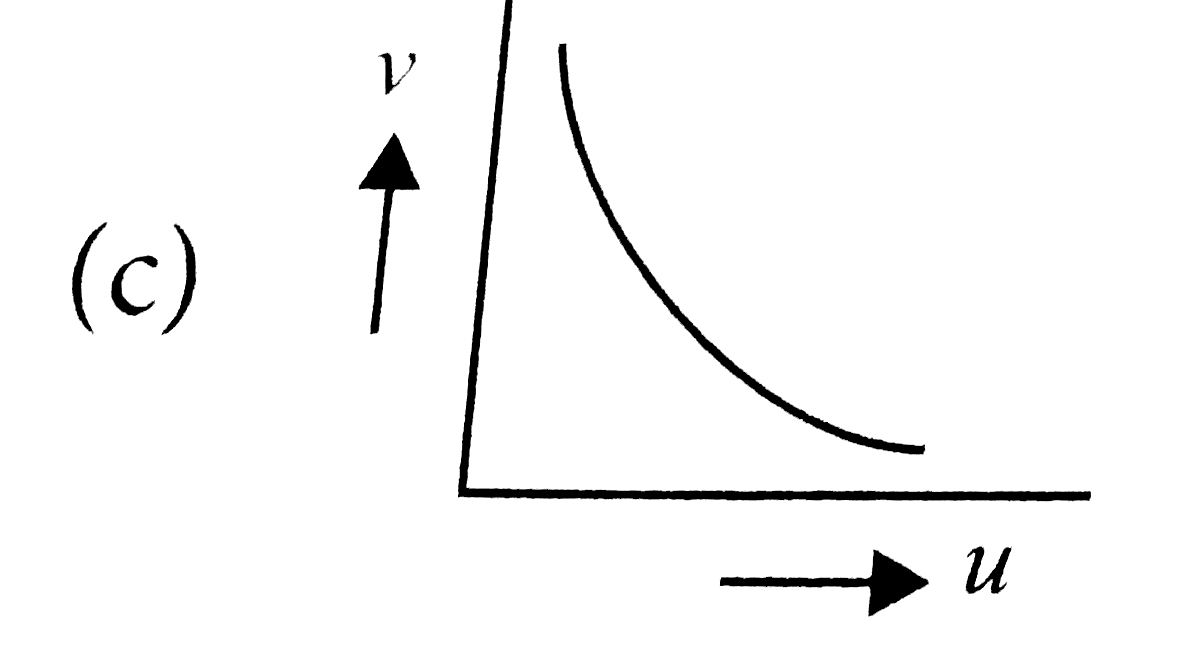Which method is more accurate in the determination of f for a concave mirror.
(i) u versus v or
(ii) 1u versus 1v graphs ?
The correct Answer is:A
To determine which method is more accurate for finding the focal length f of a concave mirror, we will analyze two different graphical methods: (i) the u versus v graph and (ii) the 1u versus 1v graph.
1. Understanding the Relationships:
- For a concave mirror, the mirror formula is given by:
1f=1u+1v
- Here, u is the object distance (measured from the mirror), and v is the image distance.
2. Graphing u versus v:
- When plotting v against u, the relationship is hyperbolic. This means that as u increases, v approaches zero and vice versa.
- The graph does not yield a straight line, making it difficult to extract precise values for f.
3. Graphing 1u versus 1v:
- Rearranging the mirror formula gives:
1v=−1u+1f
- This equation represents a linear relationship, where plotting 1v against 1u produces a straight line.
- The y-intercept of this line will be 1f, making it straightforward to determine the focal length.
4. Comparing Accuracy:
- The hyperbolic graph (from the u versus v method) makes it challenging to accurately determine the values of u and v due to the non-linear nature of the graph.
- In contrast, the linear graph (from the 1u versus 1v method) allows for easier calculations and more accurate determination of the focal length f.
5. Conclusion:
- The method using the graph of 1u versus 1v is more accurate for determining the focal length f of a concave mirror compared to the u versus v graph.
- For a concave mirror, the mirror formula is given by:
1f=1u+1v
- Here, u is the object distance (measured from the mirror), and v is the image distance.
- When plotting v against u, the relationship is hyperbolic. This means that as u increases, v approaches zero and vice versa.
- The graph does not yield a straight line, making it difficult to extract precise values for f.
- Rearranging the mirror formula gives:
1v=−1u+1f
- This equation represents a linear relationship, where plotting 1v against 1u produces a straight line.
- The y-intercept of this line will be 1f, making it straightforward to determine the focal length.
- The hyperbolic graph (from the u versus v method) makes it challenging to accurately determine the values of u and v due to the non-linear nature of the graph.
- In contrast, the linear graph (from the 1u versus 1v method) allows for easier calculations and more accurate determination of the focal length f.
- The method using the graph of 1u versus 1v is more accurate for determining the focal length f of a concave mirror compared to the u versus v graph.
Topper's Solved these Questions
Similar Questions
Knowledge Check
In an experiment to find focal length of a concave mirror, a graph is drawn between the magnitudes of (u) and (v). The graph looks like.
A B
B C
C D
D
The graph between 1v and 1u for a concave mirror looks like.
View SolutionFor a concave mirrorr, if real image is formed the graph between 1u and 1v is of the form
View SolutionWhich of the following is relatively more accurate method of determining the age of fossils?
View SolutionIn the experiment to determine the focal length of a concave mirror by graphical methods the u - v graph is
View SolutionThe magnification for a mirror is -3. How are u and v related?
View SolutionA real inverted image in a concave mirror is represented by (u,v, f are corrdinates)
View SolutionIn an experiment to find focal length of a concave mirror, a graph is drawn between the magnitudes of (u) and (v). The graph looks like.
View Solution
